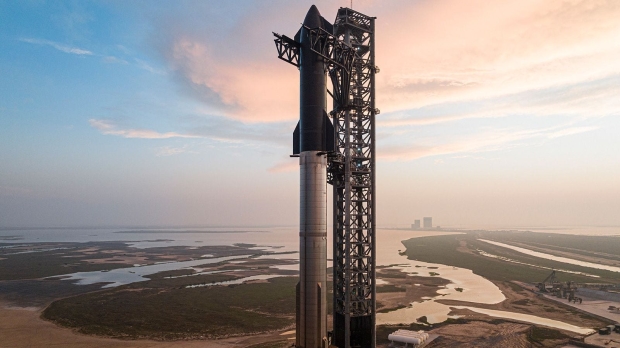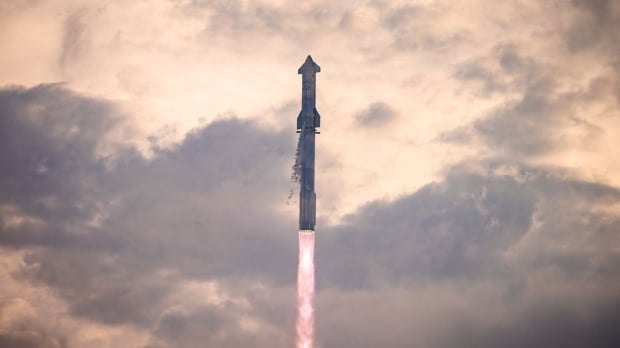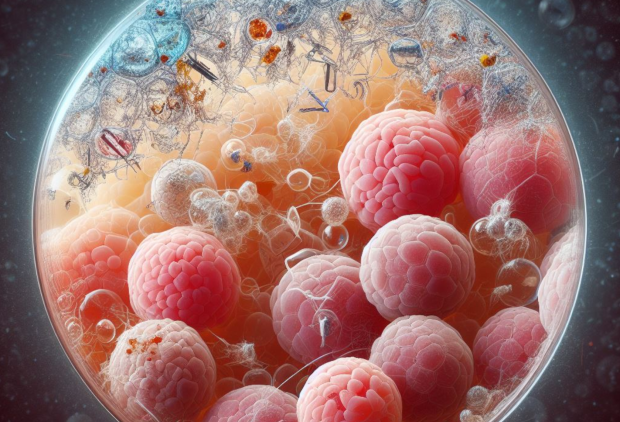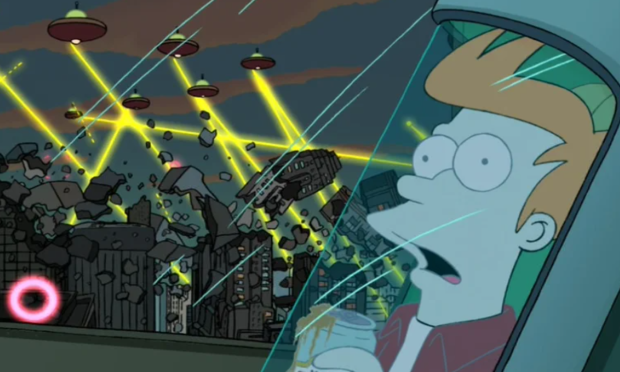Science, Space, Health & Robotics News - Page 1
Engineers release video of rifle-strapped robot dogs for military purposes
Robot dogs carrying guns is real, and there are videos posted of these new war machines being tested for upcoming combat missions.
What a time to be alive - quadruped robotic dogs with rifles strapped to their backs is actually something that is a real life thing. The first reports of such a creation come from Agence France-Presse, who covered a video published by state-owned broadcaster China Central Television (CCTV), which showed Chinese military testing a weaponized robotic dog in various scenarios. The rifle-equipped robotic pooch was shown hopping, diving, leading teams on reconnaissance objectives, and repeatedly firing its rifle attached to its back.
The robotic gun-wielding dogs were created with Unitree's $2,800 Go2 models, which are capable of being active on their own from anywhere between two and four hours depending on the task. The CCTV video shows a Chinese military soldier explaining the new robodogs "can serve as a new member in our urban combat operations" and are capable of "replacing our members to conduct reconnaissance and identify [the] enemy and strike the target."
Scientists create world's first bioprocessor made with human brain tissue
The world's first biprocessor has been created using human brain tissue, according to Swiss startup FinalSpark that recently published their results.
The company has claimed the bioprocessor is connected to an online platform that enables remote access to 16 human brain organoids. The startup says its neuroplatform is a first-of-its-link and can deliver access to biological neurons in vitro.
Notably, the company claims its new bioprocessor requires 1 million times less power than a traditional processor, and if the startup's claims are proven to be true, these bioprocessors could revolutionize heavy usage processing situations where power is a problem. An example of this would be training large language models, the underpinning technology powering AI.
SpaceX selects date for next Starship launch that has more stakes than ever before
SpaceX, in a significant move, has announced its fourth Starship launch scheduled for June 5, pending regulatory approval from the Federal Aviation Administration (FAA). This launch marks another milestone in the company's ambitious space exploration journey.
Starship has been launched three times, and each of those launches had the main mission objective of reaching orbit. SpaceX managed to reach orbit on its last launch, along with the separation between the Super Heavy booster and Starship. With that goal out of the way, the Elon Musk-led company is switching its focus to arguably the most important part of Starship, getting it back on the ground safely and undamaged to enable reliable reusability.
Given the immersive size of Starship, 400-feet in total, it's not going to be easy to land the world's largest rocket. Before any land-based attempts are made, SpaceX will first gather its bearings over the ocean. Once it's happy there, it will move to rocket launch pads at its facilities.
Next DOOM game 'The Dark Ages' set to be revealed at Xbox Games Showcase
The next installment in the DOOM franchise is purportedly called "DOOM: The Dark Ages," and it will be revealed at the Xbox Games Showcase on June 9, according to a new report from Insider Gaming.
The new report comes after previous rumors that ID Software was preparing to reveal its next DOOM project at the Xbox Games Showcase, but at the time of those reports the new DOOM project was under the codename Year Zero. Insider Gaming has now revealed the name for title, writing it has been in development for at least four years and will take players to a "medieval inspired doom world".
The exclusive report mentions the new title could be taking players back to a much younger Doomslayer, perhaps a prequel story about his earlier life before all the blood, dust and glory. Insider Gaming writes that it can independently verify the rumors that the next DOOM game will be unveiled at the upcoming Xbox Showcase.
US officials say Russia likely just deployed a secret space weapon
US government officials have said that Russia's recent rocket launch deployed a payload that is likely a classified space weapon capable of destroying satellites.
The warning comes from Robert Wood, the deputy US ambassador to the United Nations, who said last week Russia conducted a rocket launch, specifically on May 16, when it launched a satellite into low-Earth orbit that the United States has now assessed. According to Wood, the US has reason to believe the payload deployment is likely a counter-space weapon, and it's location is the "same orbit as a US government satellite".
More specifically, the Soyuz rocket's Fregat upper stage released Kosmos 2576 (the payload) into orbit approximately 275 miles above Earth at an inclination of 97.25 degrees to the equator. Notably, Russia's deputy foreign minister, Sergei Ryabkov, said the US's assessment of the payload is "fake news", but didn't provide any clarifying information.
Continue reading: US officials say Russia likely just deployed a secret space weapon (full post)
Massive explosion at SpaceX launch facility caught on video
SpaceX is currently undergoing rigorous testing of its Raptor rocket engines, which will be used by the company's next-generation rocket, Starship, the world's largest and most powerful rocket.
The Elon Musk-led company has been conducting research and development on its Raptor engines for quite some time now, and it appears to still be in the midst of tweaking and changing the engine design ahead of the highly anticipated fourth launch of Starship. According to a livestream of SpaceX's McGregor, Texas testing facility by NASASpaceFlight, a Raptor engine recently experienced an anomaly that resulted in an initial explosion and a secondary explosion.
The publication reports the secondary explosion on the test stand can be attributed to the vapors in the air from the first explosion. SpaceX hasn't officially offered any update on the explosion, and given how familiar SpaceX is with exploding rocket-related creations, it can safely assumed no one was injured from this explosion. For those that don't know, SpaceX's flagship rocket, Starship, uses 33 Raptor engines in its first stage booster called Super Heavy.
Continue reading: Massive explosion at SpaceX launch facility caught on video (full post)
Bright blue-green meteor caught in jaw-dropping videos turning night into day
A stunning meteor passed through the night sky at speeds of more than 100,000 miles per hour, causing a bright flash of blue-green light.
Skywatchers over parts of Spain and Portugal were reminded of the incredible beauty of the cosmos when an asteroid entered Earth's atmosphere at extreme speeds. The European Space Agency (ESA) confirmed the space rock was traveling at around 27.96 miles per second, and the space rock was actually a small piece of a comet. Additionally, the space agency said the chances of finding fragments of the astronomical object was very low as it likely burned up over the Atlantic ocean at an altitude of 37 miles.
What is most impressive about the comet fragment is how streaked across the sky, with the Scientists at the CSIC (Spanish National Research Council) estimate the fireball covered more than 310.69 miles before "going extinct". The event was captured by many people in both Spain and Portugal, and has since gone viral on social media as hundreds of videos were posted showing incredible light display from various locations.
Researchers confirm microplastics are now in human testicles
New research from the University of New Mexico has confirmed that microplastics have now been found within human testicle tissue.
A team of scientists analyzed testicular tissue taken from both dogs and humans and found microplastics in every sample. More shockingly, the human testicle tissue had a presence of microplastics three times higher than what was found in the dog testicle tissue. More specifically, the team discovered an average of 122.63 micrograms of microplastics per gram of tissue in canines, while human tissue was 329.44 micrograms.
The discovery of microplastics entering the male reproductive system has raised concerns about its presence impacting fertility, particularly after the team found canine samples that contained a higher quantity of polyvinyl chloride, correlated with lower sperm count in dogs. The team was unable to test the impact of polyvinyl chloride in the human tissue samples.
Continue reading: Researchers confirm microplastics are now in human testicles (full post)
Scientists discover blistering Earth-sized planet that may become historic
Astronomers published a new study in the scientific journal Nature Astronomy detailing the discovery of an exoplanet called SPECULOOS-3 b.
The newly found exoplanet is approximately 55 light-years away from Earth, which is in the world of astronomy is extremely close to our planet, given the vastness of the Milky Way. SPECULOOS-3 b orbits its host star once every 17 hours, and astronomers expect that its also tidally locked, meaning one side of the planet is perpetually being blasted by host stars light, while the other side is stuck in perpetual cold darkness.
Due to its proximity to its host star, SPECULOOS-3 b is being bathed in high amounts of radiation, peeling away any form of atmosphere the planet may have had at one stage. The lack of atmosphere and the impossibility of hosting water due to its extreme temperatures make SPECULOOS-3 b inhospitable to life as we know it, but that isn't why astronomers are excited about it.
Scientists bring frozen human brain tissue back to life for the first time
A group of scientists have managed to thaw frozen human brain tissue without causing any damage to the tissue itself.
The new research is coming out of the Fudan University in Shanghai, China, where a team led by Zhicheng Shao grew self-organizing brain samples that are called organoids. These organoids are grown from embryonic stem cells and take three weeks to fully mature. Once fully mature the brain tissue has developed neurons and neural stem cells, which means they are ready for experimentation.
The team then took these brain tissue samples and combined them with various chemicals with the goal of discovering which chemical compound would enable the brain tissue to survive being frozen and still enable growth following its thawing. According to the team's results, which were published in the scientific journal Cell Reports Methods, the most successful combination of chemicals was methylcellulose, ethylene glycol, DMSO, and Y27632 - together, the solution is called MEDY.











